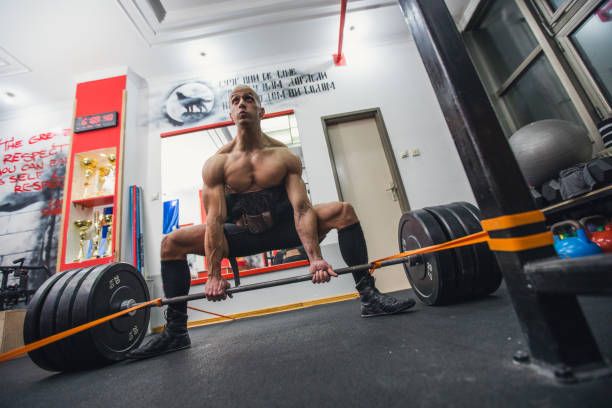
The Science Behind How a Weightlifting Belt Works

Weightlifting belts have been a common accessory used by athletes and fitness enthusiasts to provide support and reduce the risk of injury during heavy lifts. These belts are believed to work by increasing intra-abdominal pressure (IAP), stabilizing the spine, and improving force production during lifts. In this article, we will explore the science behind how weightlifting belts work and their effect on lifting performance.
The Science Behind How a Weightlifting Belt Works:
Intra-abdominal Pressure (IAP):
Weightlifting belts are believed to increase Intra-abdominal pressure while lifting. IAP is the pressure within the abdominal cavity. When the lifter takes a deep breath and pushes their belly out against the belt, it increases the pressure inside the abdominal cavity, creating a stable base for the spine to work against. This increased pressure provides stabilization of the spine during lifts and reduces the risk of injury.
Stabilization of the Spine:
During heavy lifts, the spine can be exposed to significant loads, which can lead to injury. Weightlifting belts help stabilize the spine by limiting the movement of the lumbar vertebrae, improving posture and reducing the risk of injury. The belt acts as an external support to the muscles of the lower back, allowing them to work more efficiently.
Improved Force Production:
Weightlifting belts can also improve force production during lifts by allowing the lifter to push against a more stable core. The increased IAP and stabilization of the spine provide a solid foundation for the lifter to generate force from, leading to improved lifting performance.
The Effect of Weightlifting Belts on Performance:
Maximal Strength and Weightlifting Belts
Several studies have found that weightlifting belts can improve maximal strength during lifts. A study conducted on powerlifters found that wearing a weightlifting belt increased maximal strength in squats and deadlifts. Another study found that wearing a weightlifting belt improved maximal strength during the bench press.
Improved Technique:
Weightlifting belts can also improve lifting technique by improving stability and posture. By providing support to the lower back and limiting movement in the spine, weightlifting belts help maintain a more upright posture and prevent rounding of the lower back. This can lead to improved lifting technique and injury prevention when using weightlifting belts.
Reduced Risk of Injury:
The primary function of weightlifting belts is to provide support and reduce the risk of injury during heavy lifts. By increasing IAP and stabilizing the spine, weightlifting belts help protect the lower back from excessive loading, reducing the risk of injury. Additionally, improved lifting technique as a result of wearing a weightlifting belt can also contribute to a reduced risk of injury.
People Also Ask:
How does a weightlifting belt help?
A weightlifting belt helps increase intra-abdominal pressure (IAP), stabilizes the spine, and improves force production during heavy lifts, which can lead to improved lifting performance and reduce the risk of injury.
What is the purpose of a weightlifting belt?
The purpose of a weightlifting belt is to provide support and reduce the risk of injury during heavy lifts by increasing IAP, stabilizing the spine, and improving force production.
What muscles does a weightlifting belt work?
A weightlifting belt primarily works to support the muscles of the lower back, including the erector spinal muscles, by providing external support and limiting the movement of the lumbar vertebrae.
Should I wear a weightlifting belt?
The decision to wear a weightlifting belt ultimately depends on personal preference and training goals. While weightlifting belts can be effective tools for improving lifting performance and reducing the risk of injury, they should not be relied upon solely to prevent injury and should be used in conjunction with proper lifting technique and training practices. It is also important to note that weightlifting belts are not necessary for all types of lifts and exercises.
Conclusion:
Weightlifting belts can be an effective tool for improving lifting performance and reducing the risk of injury during heavy lifts. By increasing IAP, stabilizing the spine, and improving force production, weightlifting belts provide a solid foundation for lifters to generate force. However, it is important to note that weightlifting belts should not be relied upon solely to prevent injury and should be used in conjunction with proper lifting techniques and training practices.
Appreciate the creator